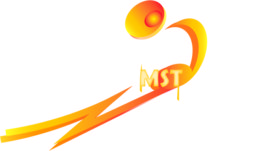In an earlier post, I alluded to the necessity of allowing the sub-conscious to control execution of movements in sport. So, is it really bad to try to help out the sub-conscious with a little conscious control of the action? After all, if there is a lot on the line, isn’t it helpful to really put all of the resources of the brain to work to help with the execution of the action? “Yes”, it is really bad, and “No”, you really don’t want to involve the conscious thought processes to control the action! Why? For one reason, the conscious brain processes are slow!!
Do you want to prove it to yourself? Try this experiment. Seriously – try it right now! Tie your shoe – how long did it take you? I just did it. It took me less than 4 seconds to execute a perfectly tied knot the same way I have been doing it for the last 53 years or so…

Now, try it again, but this time, use conscious control over the process. Just reverse two of the processes. Change the order in which you make the initial cross of the strings – and then also change which hand you make the initial “rabbit ear”. Go ahead, I’ll wait! Try it and time yourself. Ok, my time was 9 seconds, and the result was a knot that looked like the ones I made when I first starting tying my shoes!
The same thing happens if you try to use conscious thought processes to control movements that you have already taught your sub-conscious to perform. Why is this? Perhaps you have heard the phrase “neurons that fire together wire together”. That is how we build “muscle memory”. Of course, our muscles don’t actually develop memories, but our nervous system does have what is referred to as “neuroplasticity” meaning our brains and nervous systems adapt to demands we place on them. As we “teach” our brains the proper way to perform movements, a process called myelination takes place in which a sheath of material called myelin actually thickens over the axons of our neurons making them more efficient at transferring signals from our eyes and brains to our muscles. As the myelin gets thicker, the network gets faster and better able to execute movements that we wish to occur – that is, until we monkey with the process by trying to alter how we do something by applying conscious control!
To learn more about how this process works, feel free to check out this link as well as countless others on the web! There is a lot of science behind why we want to execute from the sub-conscious system instead of providing conscious control!
https://jcs.biologists.org/content/127/14/2999
This is also why it can be difficult (but not impossible) to “unlearn” a bad habit. Once you have established a neural network, it will be there ready to leap into action. In order to avoid using it, you have to build an even stronger network with a new set of instructions! I have experienced this phenomenon first hand. A while ago, I started practicing by swinging my empty gun on indoor practice targets without actually pulling the trigger when I normally would. I repeated this process hundreds, if not thousands of times. Guess what happened when I went to the range the next time and started shooting real targets. You got it! I would get on the target, and not pull the trigger! I had taught myself to flinch! It has taken a lot of practice time to suppress that network that was happy just inserting on the target without pulling the trigger! Even still, every once and a while, that network will go active again!
So, get out there and really groove that swing or shot during practice. What you are doing is creating a more efficient neural network that you can call upon in competition. You don’t need to help things along by letting that egotistical conscious side of your brain “help” out! Trust your sub-conscious! It will get the job done for you when you need it to during competition.
